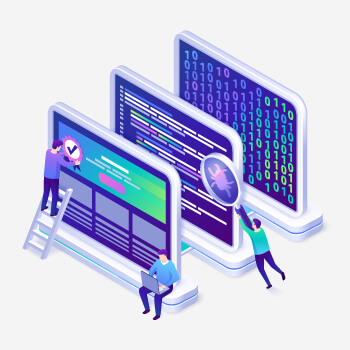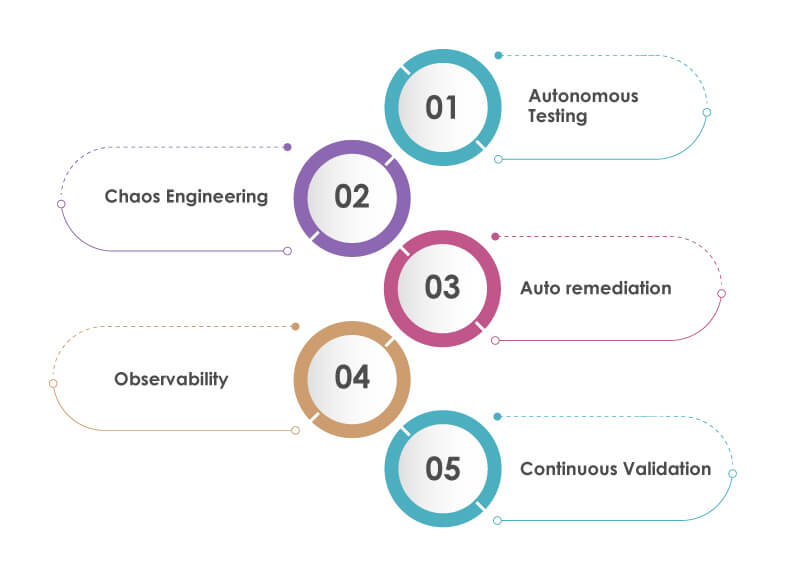
In the rapidly evolving digital landscape, software quality has become paramount for businesses. The ability to deliver reliable, secure, and high-performing software is essential for meeting customer expectations and maintaining a competitive edge. To achieve this, organizations need to adopt a proactive approach to software quality by building a robust “digital immune system.” Similar to the human body’s immune system, a digital immune system focuses on prevention, detection, and response to ensure software quality and minimize the impact of vulnerabilities or defects. In this blog post, we will explore the key components and strategies for building a digital immune system that can enhance software quality.
Why is It important to Build a Digital Immune System?

A Digital Immune System integrates software engineering strategies, design, development, technologies, and data analytics to achieve multiple goals. These goals include enhancing user experience (UX) and effectively mitigating and responding to operational and security risks in real time. Building a Digital Immune System is essential as it enables organizations to deliver exceptional UX while proactively addressing potential operational and security risks.
In addition to this, Software and application engineers are responsible for delivering functional solutions that provide an engaging user experience and contribute to the overall business value.
However, many application and software engineering leaders feel incapable of achieving these goals, primarily due to outdated development and testing approaches that hinder their progress.
How Digital Immune System works for Software Testing Improvement?

According to Gartner, teams often lack the necessary skills to build robust and resilient applications, leading to failures in meeting customer expectations and exposing organizations to operational and business risks. As a result, software engineering leaders are actively seeking new practices and approaches to mitigate these risks and achieve significant business impact.
The concept of digital immunity presents a roadmap that addresses these challenges by incorporating a range of practices and technologies. By implementing this roadmap, software engineering teams can effectively identify and address various issues, such as functional bugs, security vulnerabilities, and data inconsistencies, thereby ensuring the development of resilient software applications that provide an exceptional user experience.
Digital immunity brings about crucial changes in the approach to software and application engineering:
• Shift from a project-centric quality focus to an ecosystem Wide view of quality, considering the entire software ecosystem rather than individual applications or projects.
• Embed quality, aligned with end-user requirements, throughout every stage of the application development process, emphasizing its importance from the beginning rather than treating it as an afterthought.
• Recognize the essential roles, technologies, and practices necessary to develop resilient applications and assign personnel with the appropriate skills to fulfill these roles.
Five Elements of a Digital Immune System

Autonomous Testing:
Utilizing artificial intelligence (AI) and machine learning (ML) technologies to conduct software testing automatically, without human intervention. It goes beyond executing test cases and includes automated planning, creation, maintenance, and analysis of tests. This approach enables independent and autonomous testing activities.
Chaos Engineering:
Conducting experimental failure or fault testing to uncover software bugs, weaknesses, and points of failure. By intentionally creating controlled disruptions in preproduction environments, teams can learn from these experiments and apply the insights to improve normal operations.
Auto remediation:
Equipping a software system or ecosystem to monitor itself and automatically correct issues without involving operations staff. Examples include automatically restarting a crashed application or reverting a faulty configuration to a previous known working state.
Observability:
A characteristic of software and systems that allows developers and engineers to effectively detect and isolate the root cause of problems. Observability tools enable the identification of anomalies and the correlation of relevant information from log files and metrics, enhancing uptime and troubleshooting capabilities.
Continuous Validation:
The ability to monitor the integrity of data and systems in real-time to identify inconsistencies or abnormal behavior before they impact the user experience. By actively validating the state of the system, teams can proactively detect and address potential problems.
Assessing the Current State of Software Quality

Before building a digital immune system, it is crucial to assess the current state of software quality within your organization. This involves evaluating existing quality practices, identifying weaknesses and areas for improvement, and understanding the specific challenges faced by your development teams.
Proactive Measures for Prevention:
Establishing Robust Coding Standards and Guidelines:
Implementing and enforcing coding best practices and standards can significantly reduce the occurrence of coding errors and improve maintainability.
Implementing Continuous Integration and Delivery:
Automating the process of building, testing, and deploying software ensures that potential issues are caught early in the development cycle.
Conducting Code Reviews and Pair Programming:
Collaborative code reviews and pair programming can enhance code quality, identify defects, and facilitate knowledge sharing.
Reactive Measures for Detection and Response:
Implementing Automated Testing:
Automated testing frameworks, including unit tests, integration tests, and regression tests, help identify defects and ensure consistent functionality.
Applying Static and Dynamic Analysis Tools:
Leveraging static and dynamic code analysis tools can detect potential vulnerabilities, performance issues, and coding errors.
Utilizing Penetration Testing and Vulnerability Scanning:
Regularly conducting penetration testing and vulnerability scanning helps identify security weaknesses and vulnerabilities before they are exploited.
Incorporating Continuous Improvement Practices:
Collecting and Analyzing Quality Metrics:
Establishing metrics and key performance indicators (KPIs) to measure software quality and tracking progress over time.
Conducting Root Cause Analysis and Retrospectives:
Identifying the root causes of defects or issues and implementing corrective actions to prevent recurrence.
Promoting a Culture of Learning and Knowledge Sharing:
Encouraging continuous learning, organizing knowledge sharing sessions, and fostering collaboration between development and testing teams.
How Does TestingXperts help Organizations Build Digital Immunity?

TestingXperts plays a significant role in helping organizations build digital immunity through its range of specialized services and approaches. Here are four keyways in which TestingXperts contributes to building digital immunity:
Comprehensive Testing Strategies:
TestingXperts develops and implements comprehensive testing strategies that prioritize resilience. By understanding the unique requirements of each organization, TestingXperts designs tailored testing approaches that cover functional and non-functional aspects of applications. This includes designing robust test plans, creating detailed test cases, and executing thorough testing across different stages of the software development life cycle. By focusing on resilience, organizations can build applications that are better equipped to handle unexpected failures and provide superior user experience.
Automation Testing Expertise:
Automation testing is a critical component of building digital immunity. TestingXperts brings extensive expertise in automation testing, utilizing industry-leading tools and frameworks to automate repetitive and critical test scenarios. This enables faster and more efficient testing cycles, improves test coverage, and allows organizations to identify and address defects earlier in the development process. With TestingXperts’ automation capabilities, organizations can achieve higher levels of resilience and accelerate their time-to-market.
Security Testing and Vulnerability Assessments:
To build digital immunity, organizations must address security vulnerabilities and protect their applications from cyber threats. TestingXperts provides comprehensive security testing services, including vulnerability assessments, penetration testing, and security code reviews. By identifying and remediating security flaws, organizations can enhance the resilience and security posture of their applications, safeguarding sensitive data and minimizing the risk of breaches or attacks.
Continuous Testing and DevOps Integration:
TestingXperts promotes the integration of testing into the continuous delivery pipelines of organizations by embracing DevOps principles. By aligning testing activities with the development and deployment processes, TestingXperts helps organizations achieve faster feedback cycles, reduce time-to-market, and improve application resilience. Through continuous testing practices, organizations can identify and address issues early on, ensuring that applications are resilient, reliable, and able to deliver a superior user experience.
By leveraging TestingXperts’ expertise in testing and quality assurance, organizations can build digital immunity and develop resilient applications that meet user expectations, perform optimally, and withstand the challenges of a rapidly evolving digital landscape.
Conclusion
Building a digital immune system is crucial for organizations aiming to improve software quality and enhance resilience. By implementing the key elements of digital immunity, such as comprehensive quality assurance, integrated quality throughout the development process, skilled personnel, advanced technologies, and practices, organizations can effectively address the challenges of today’s dynamic software landscape.
Partnering with experienced testing and quality assurance providers like TestingXperts further strengthens the journey towards building a digital immune system. With their comprehensive testing strategies, automation expertise, security testing capabilities, and integration of testing into DevOps processes, organizations can achieve greater resilience, accelerated time-to-market, and improved user experiences.
By embracing digital immunity, organizations can minimize operational and business risks, meet customer expectations, and deliver software applications that not only function flawlessly but also provide superior user experience. Building a digital immune system is an ongoing process that requires continuous evaluation, adaptation, and the adoption of emerging technologies and best practices. By investing in building a digital immune system, organizations can ensure long-term software quality, stability, and business success in an increasingly complex digital landscape.
Discover more
Get in Touch
Stay Updated
Subscribe for more info




